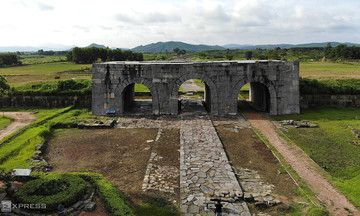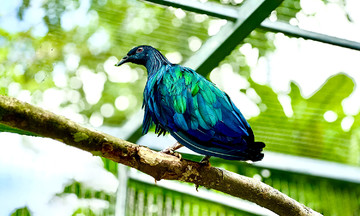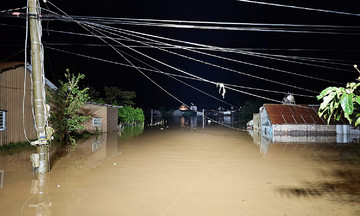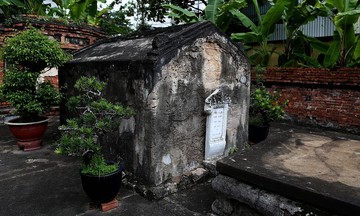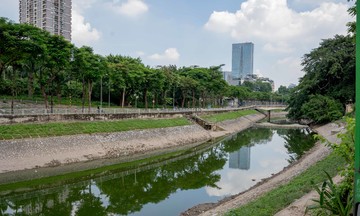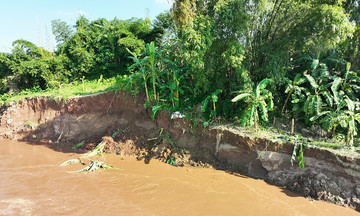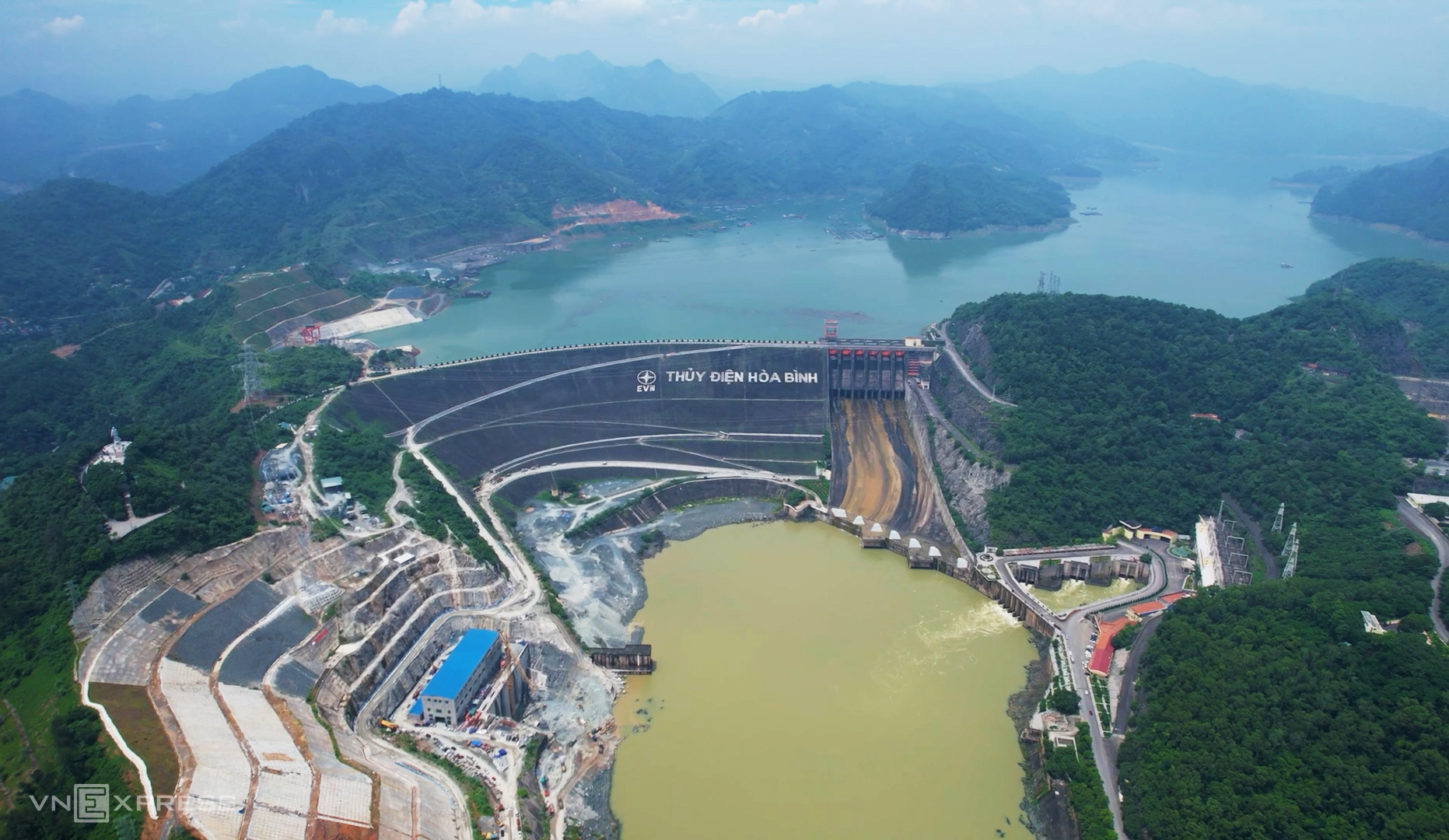 |
The Hoa Binh hydropower plant, located on the Da River in Phu Tho province, is one of Vietnam's most significant infrastructure projects. Constructed with support from the Soviet Union, construction began in 1979 and was completed in 1994. The plant boasts eight units with a total installed capacity of 1,920 MW, generating an average of 8.5 to 9 billion kWh annually.
The Hoa Binh dam combines gravity and earth-rock fill, standing 128 meters high and 970 meters long. The reservoir covers approximately 208 square kilometers, with a circumference of about 230 km and a capacity of 9.45 billion cubic meters of water, making it one of Vietnam's largest artificial reservoirs. Photo: Loc Chung
 |
 |
On 6/7, the first rotor was successfully installed for the Hoa Binh hydropower plant expansion project. This project, with two units totaling 480 MW, represents a 9,220 billion VND investment and is expected to add nearly 500 million kWh annually to the power grid.
Beyond electricity generation, the plant also plays a crucial role in flood control, providing water for downstream areas, and contributing to the socioeconomic development of the Northwest region. It's also a popular tourist destination, offering a blend of historical significance and natural beauty. Photo: Loc Chung
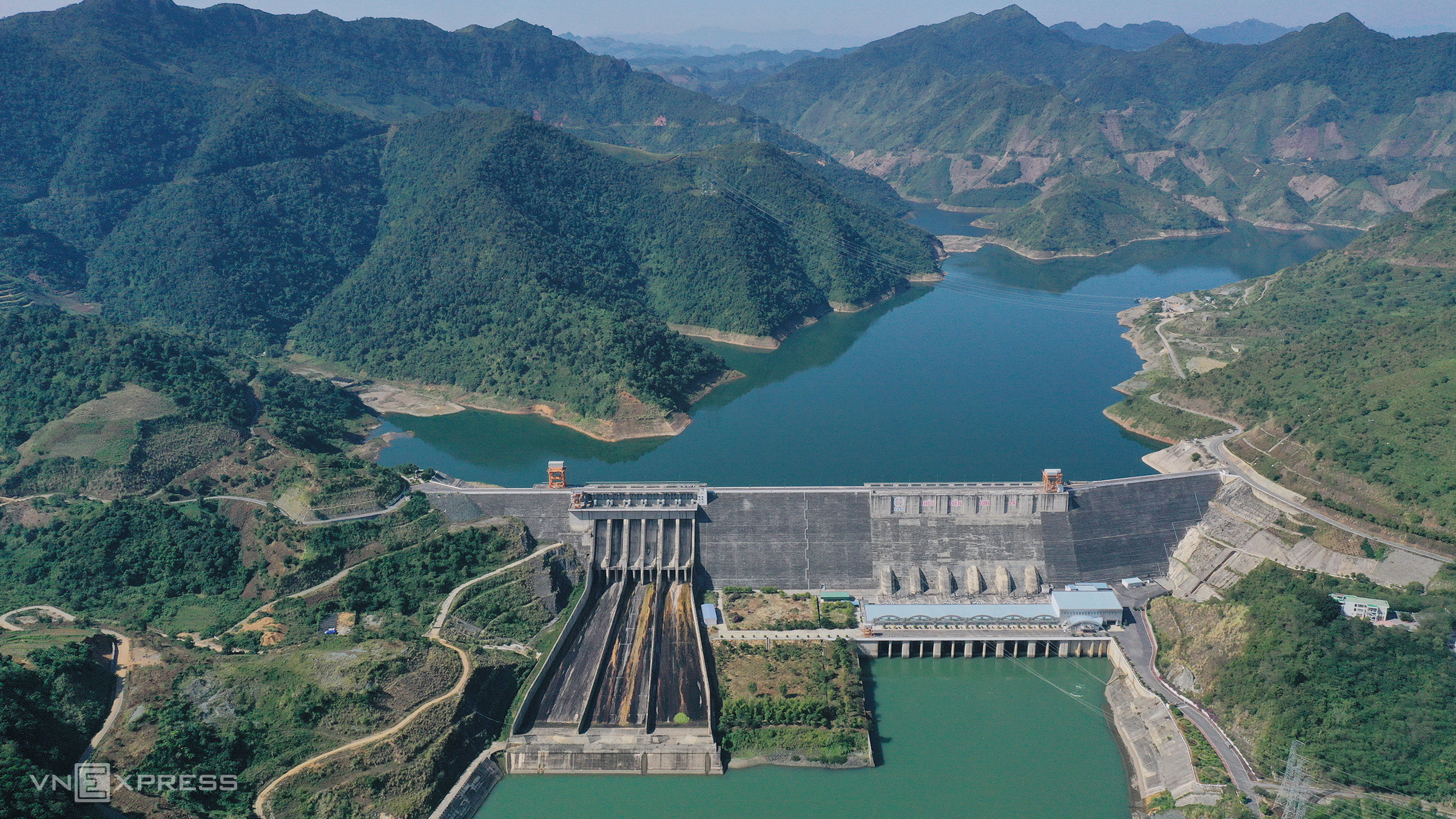 |
The Son La hydropower plant, situated on the Da River in Son La province, is the largest in Vietnam and Southeast Asia. The Vietnam Electricity Group spearheaded this project, which commenced on 2/12/2005 and was completed on 23/12/2012, three years ahead of schedule.
With six 400 MW units, the plant's total installed capacity is 2,400 MW, yielding an annual output of 10.2 to 10.5 billion kWh. The 138-meter-high, 962-meter-long dam creates a 224 square kilometer reservoir with a capacity exceeding 9.2 billion cubic meters of water, spanning across Son La, Lai Chau, and Dien Bien provinces. Photo: Ngoc Thanh
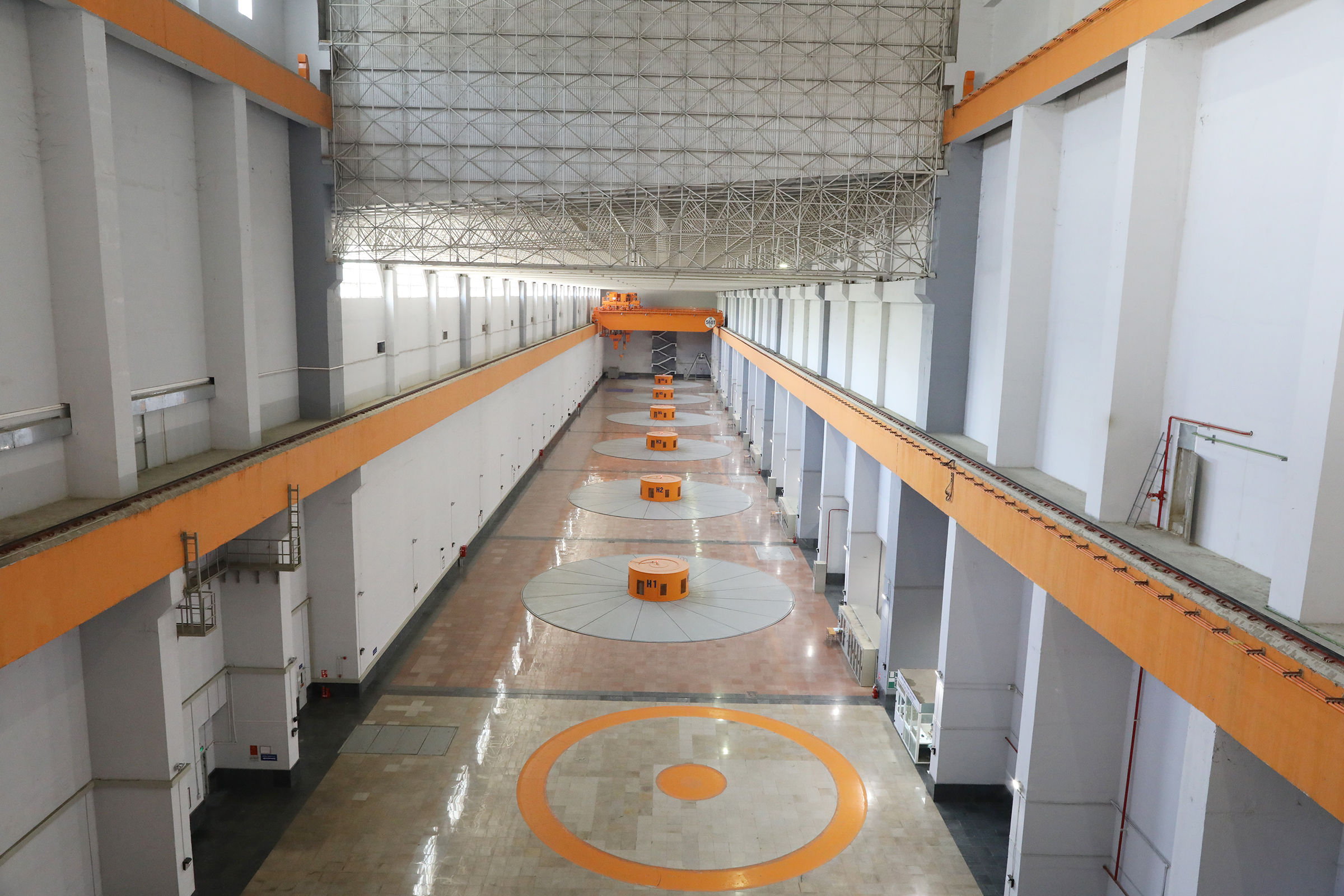 |
 |
The Son La hydropower plant is vital for the national grid, providing flood control for the Red River Delta, dry season irrigation, and boosting transportation, tourism, and socioeconomic development in the Northwest. The project also involved the largest resettlement effort in Vietnam's history, safely relocating over 20,000 households.
The successful construction and operation of the Son La hydropower plant demonstrates Vietnam's capability to manage large-scale hydropower projects, contributing to energy security and sustainable development. Photo: Ngoc Thanh
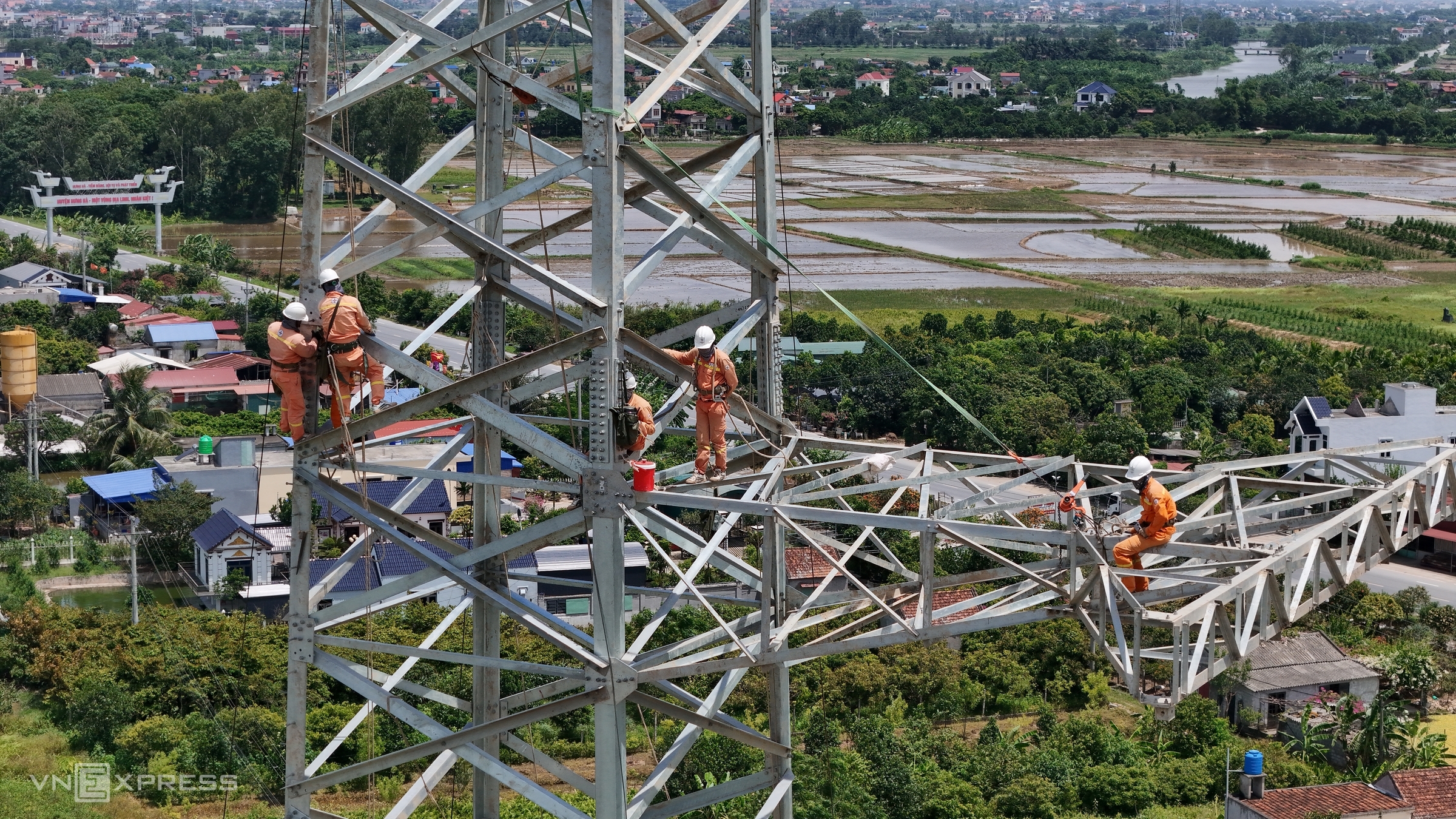 |
The 500kV North-South power line, a national high-voltage transmission system, forms the backbone of Vietnam's electricity grid.
The first phase of the 500kV North-South transmission line began in 1992 and was completed in May 1994. Spanning over 1,487 km from Hoa Binh to Phu Lam (TP HCM), it traverses 14 provinces and cities. This strategically important project transmits electricity from large hydropower plants in the North and Central regions to the South, meeting its high energy demands.
The photo shows the construction in Hong Linh commune, Hung Ha district, the former Thai Binh province, now Hung Yen province. Photo: Hoang Anh
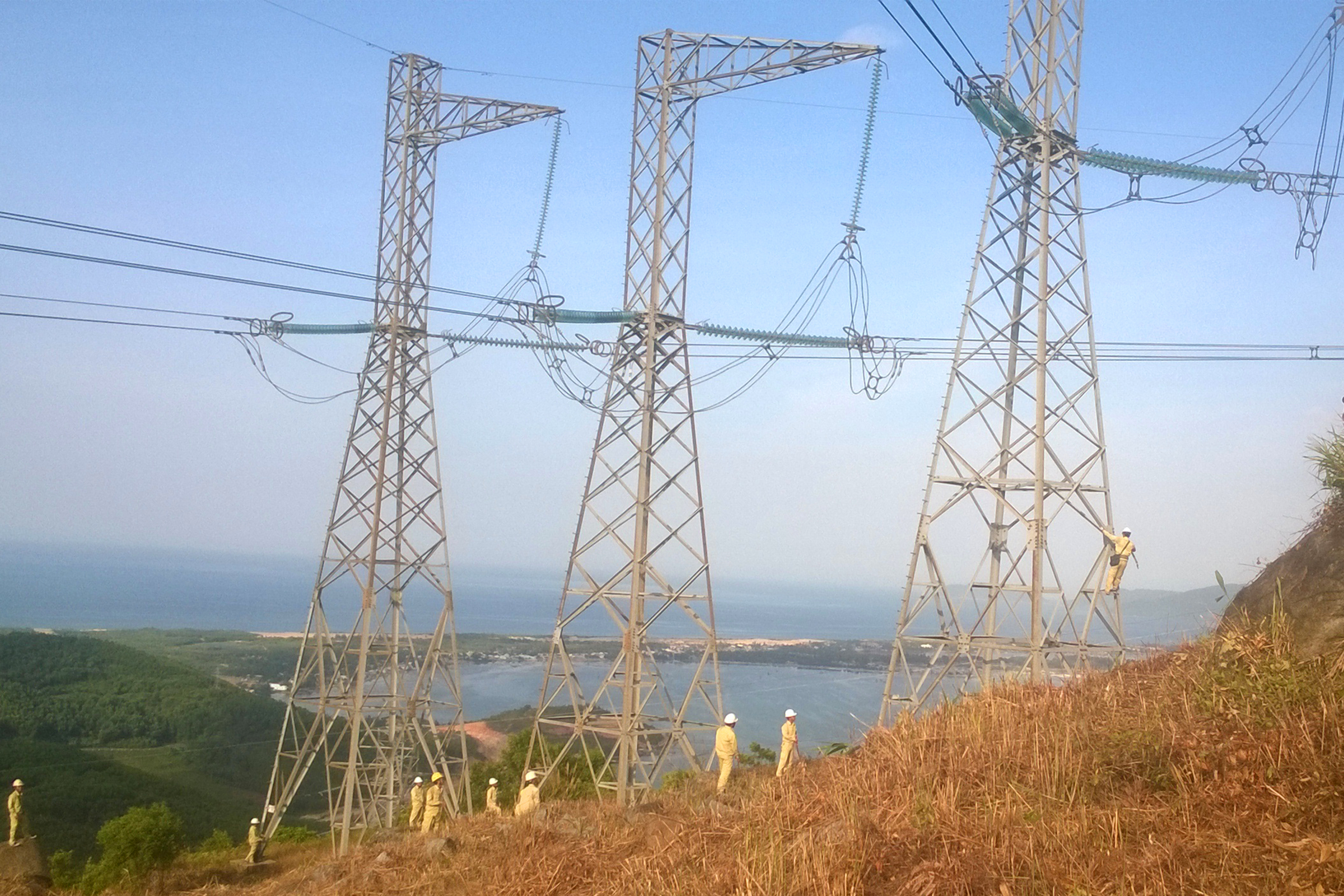 |
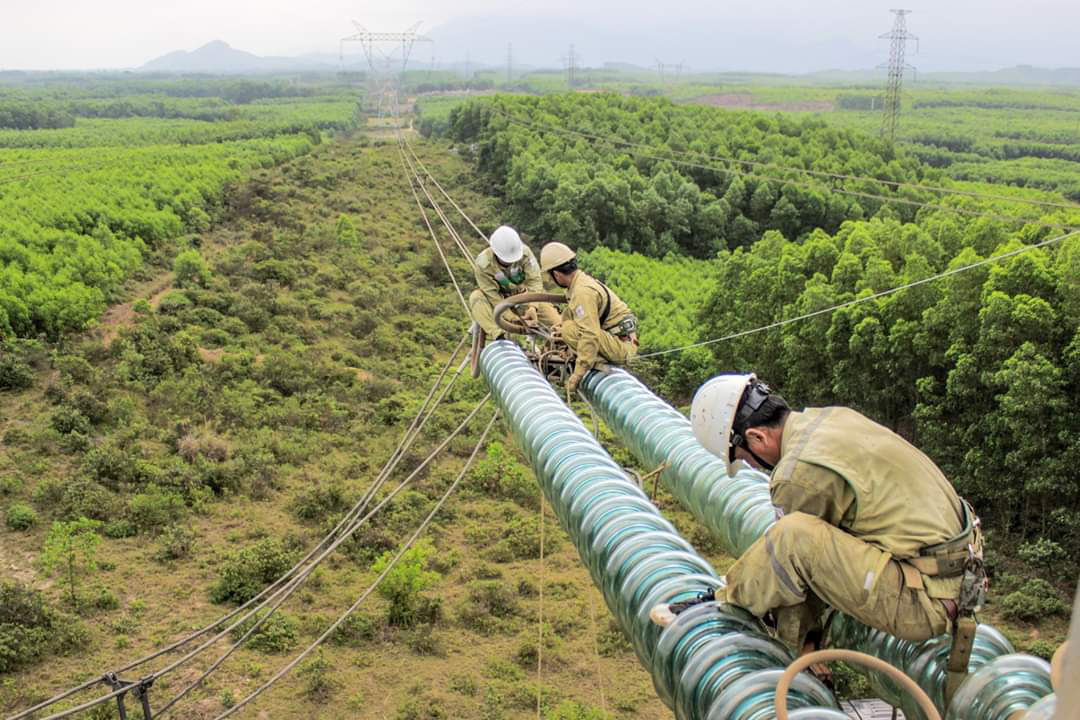 |
The 500kV line has significantly stabilized the national grid, ensuring energy security, promoting socioeconomic growth, and enhancing Vietnam's ability to manage and construct high-voltage power projects. Subsequent phases have expanded the network, creating a stable and sustainable transmission system linking the North, Central, and South regions.
The photo depicts the 500kV line passing through Hue city. Photo: Vo Thanh
 |
The Phu My thermal power plant occupies approximately 100 hectares in Phu My town, Ba Ria - Vung Tau province. The complex has undergone several phases of development.
Starting in 1997 with a two-unit gas turbine plant, generating 228 MW using associated gas from the Bach Ho field, Phu My Power Company now operates four plants: Phu My 1, Phu My 2.1, Phu My 2.1 Expansion, and Phu My 4. The entire system comprises 13 units with a total capacity exceeding 2,540 MW, meeting the growing electricity needs of the South and the entire country.
The plant utilizes combined cycle gas turbine technology, increasing power generation efficiency to 45-55% while reducing emissions compared to traditional thermal power plants. Phased construction maximizes the use of natural gas from offshore fields, ensuring operational flexibility and development.
The total investment in the Phu My thermal power complex amounts to billions of USD. Its scale and advanced technology make it a cornerstone of the Southern power system, contributing significantly to national energy security. Photo: Truong Ha
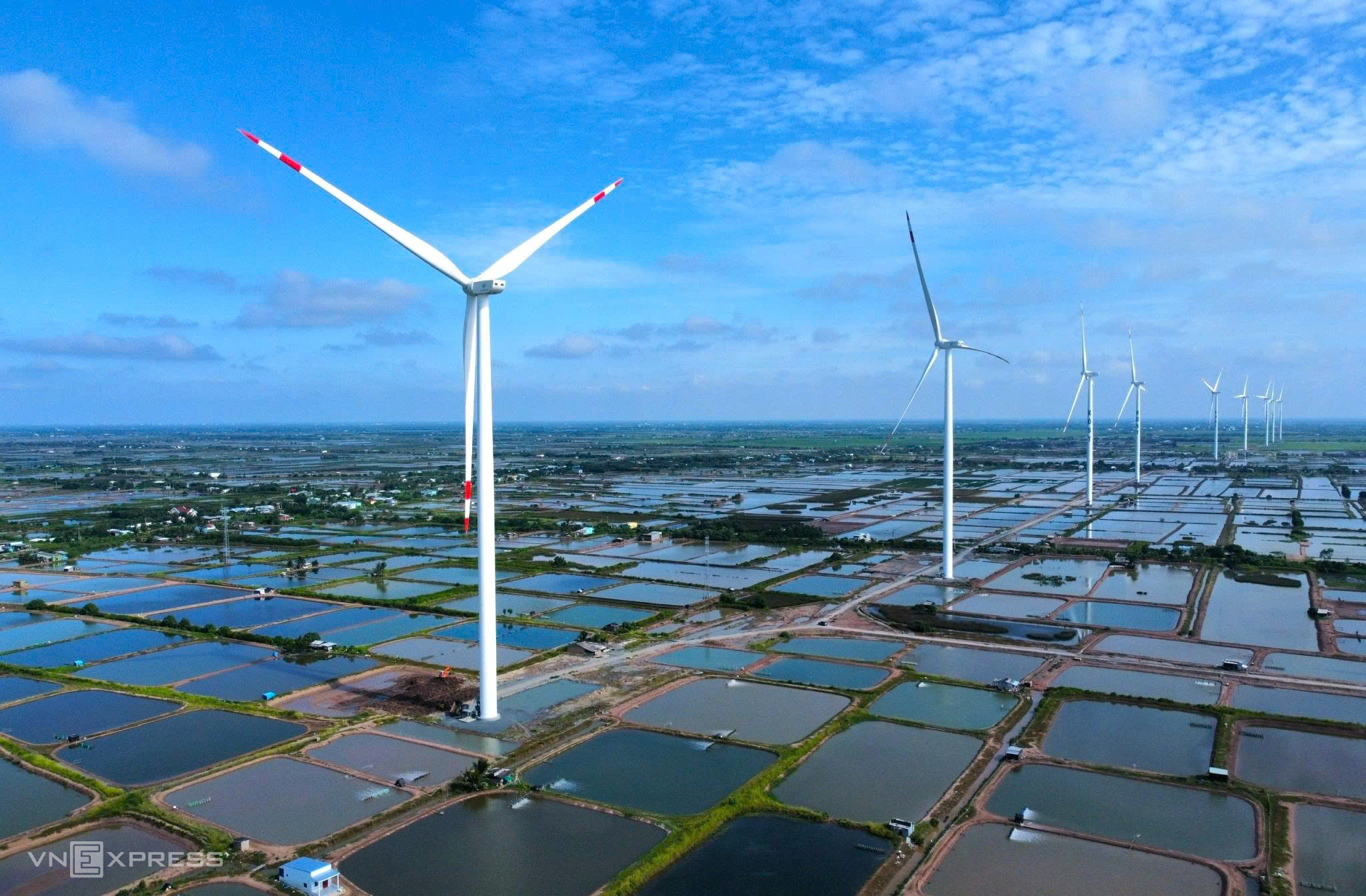 |
Construction of the Bac Lieu wind power plant, located in Hiep Thanh ward, Ca Mau province (formerly Vinh Trach Dong commune, Bac Lieu city, Bac Lieu province), commenced in September 2010. This marks the first nearshore wind power project in Southeast Asia.
The 8,857 billion VND project, divided into three phases, will eventually feature 133 turbines with a combined capacity of 241.2 MW. Connected to the national grid since June 2013, the plant reached 1 billion kWh of electricity generation by March 2020. Photo: Chuc Ly
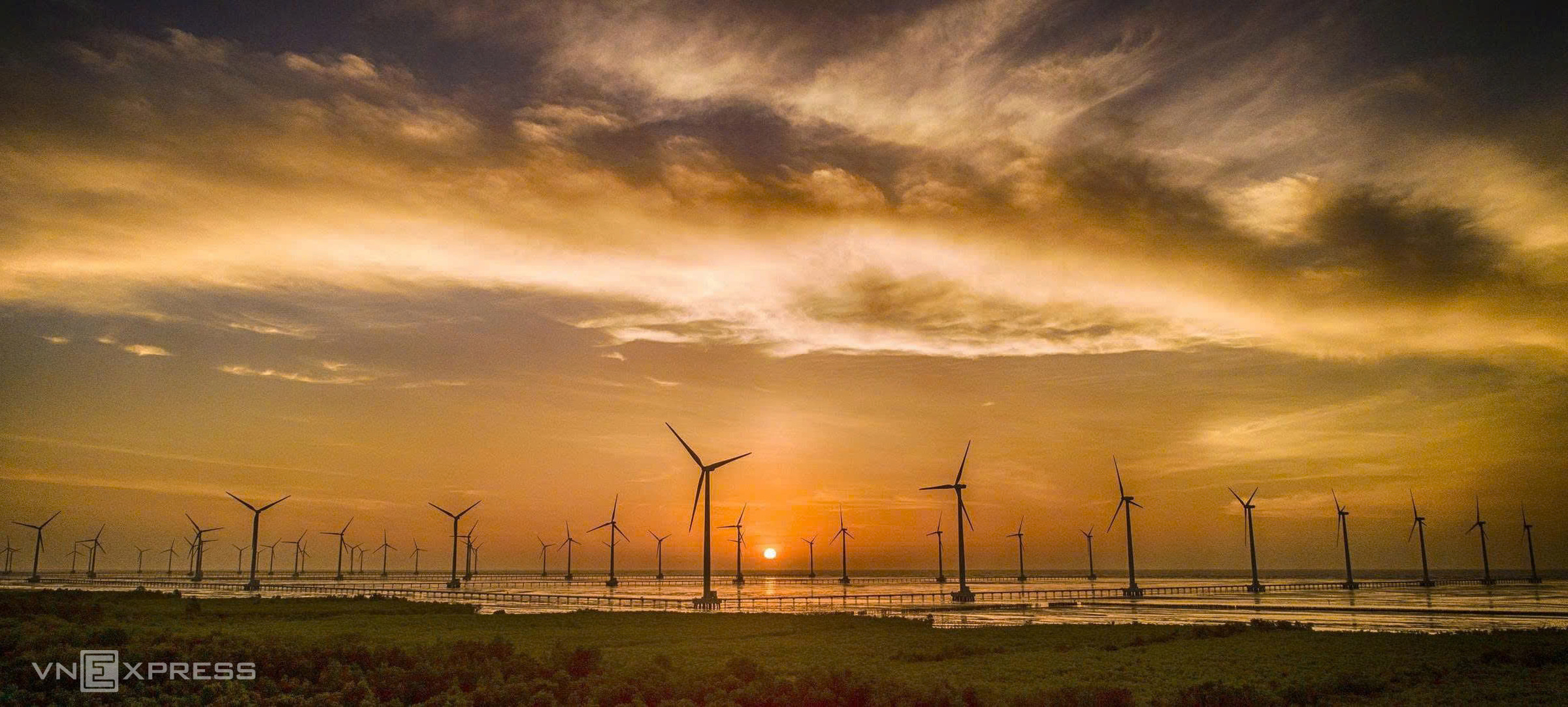 |
The Bac Lieu wind power plant is one of the province's largest projects, playing a key role in socioeconomic development and attracting around 200,000 visitors annually.
The Ca Mau Gas-Power-Fertilizer Complex, a national key project, began construction on 9/4/2006 in Khanh An commune, U Minh district, Ca Mau province. Spanning over 200 hectares, the complex includes the PM3-Ca Mau gas pipeline with a capacity of 2 billion cubic meters per year, two Ca Mau power plants (1 and 2) with a combined capacity of 1,500 MW, and an 800,000-ton-per-year fertilizer plant.
The 56-hectare Ca Mau 1 and 2 power plants employ combined cycle gas turbine technology in a 2-2-1 configuration: two gas turbines, two heat recovery steam generators, and one steam turbine per plant. Each gas and steam turbine has a capacity of 250 MW, designed, supplied, and installed by Siemens (Germany). Photo: Chuc Ly
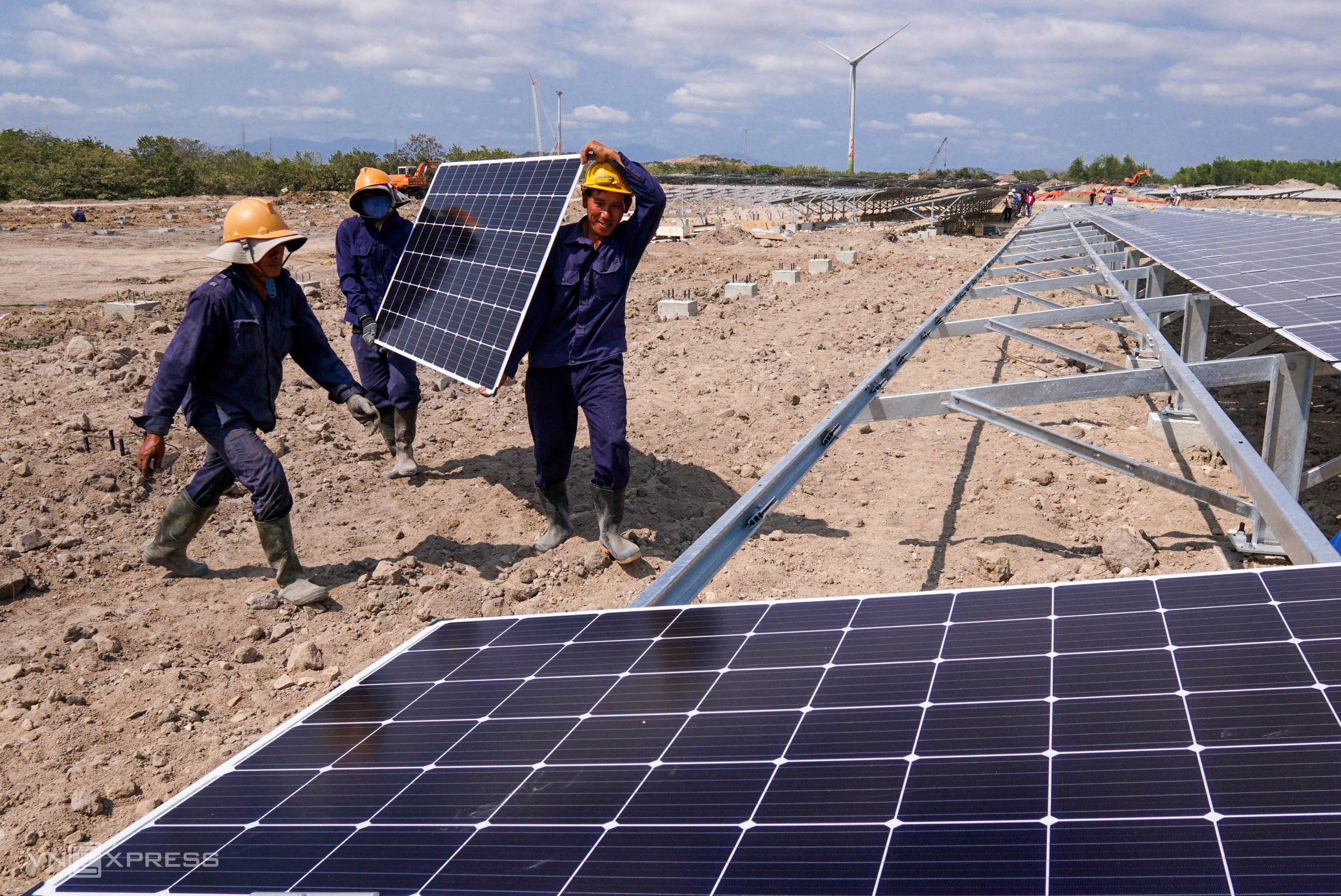 |
The Trung Nam solar power plant, developed by Trung Nam Construction Investment Joint Stock Company, is one of Vietnam's largest and most prominent renewable energy projects. Located in Khanh Hoa province, a region with high solar radiation, the site is ideal for solar power development.
The Trung Nam solar power complex boasts a total capacity of 450 MW, spread across 557 hectares, representing a total investment of nearly 14,000 billion VND. Upon its completion in 2020, it was the largest solar power plant in Southeast Asia. Photo: Quynh Tran
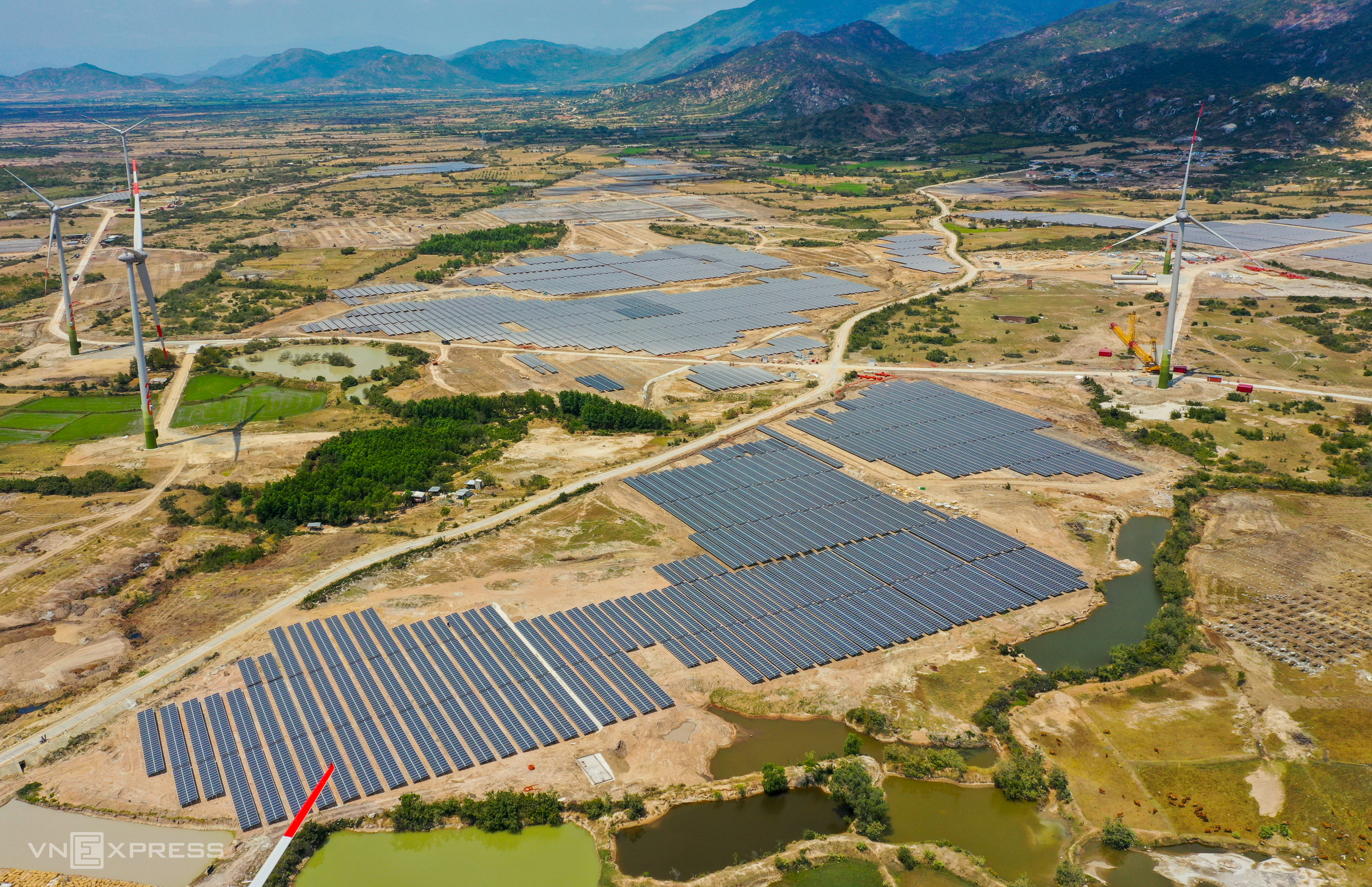 |
Construction began in January 2020, and after just six months, the plant was completed and began commercial operation in July 2020. Beyond its scale, the project also features a dedicated transmission system. Trung Nam constructed a 500kV substation and a 17 km 500kV transmission line, which was subsequently handed over to the state for management and operation, easing pressure on the national grid.
The Trung Nam solar power plant generates over 1 billion kWh annually, providing clean electricity to hundreds of thousands of households and reducing CO2 emissions by hundreds of thousands of tons each year. It plays a significant role in Vietnam's green energy strategy and its response to climate change. The project has become a symbol of green investment in renewable energy in Vietnam. Photo: Quynh Tran
Reporting team




